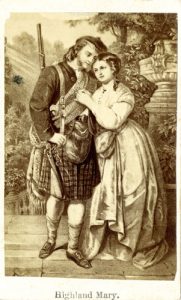ARCHIVAL MOMENT
FEBRUARY 14
The true origin of Valentine’s Day may always be in question, but most historians seem to agree on the basic elements. St. Valentine, as he has become known, was a priest in Rome during the times of Emperor Claudius II. Claudius, who was known in his times as “Claudius the Cruel” had decreed that his soldiers were no longer allowed to marry. It was Claudius’s belief that single, men without families were the best soldiers.
Valentine found this law absurd and went against the law, marrying couples in secret. This was soon discovered by Claudius II and Valentine was taken to prison and ordered beheaded. It is said that in his final days in prison, Valentine wrote a letter to his jail keepers daughter who had been visiting him during his imprisonment. He signed the letter, “From your Valentine”. This is what is now thought of as the first Valentine card.
St. Valentine is said to have died on February 14th and this is why we celebrate the holiday on this day.
The Saint Valentine who is celebrated on February 14 remains in the Catholic Church’s official list of saints (the Roman Martyrology), but, in view of the scarcity of information about him, he has been demoted – his commemoration was removed from the General Calendar for universal liturgical veneration, when this was revised in 1969.
Many traditions have evolved around St. Valentine’s Day. The first name you hear on Valentines Day?
If a woman sees a robyn flying over head on Valentines Day she will marry a sailor. If she sees a sparrow, she will marry a poor man, but will be very happy. If she sees a goldfinch, she will marry a millionaire.
• The 1st name you hear or read on Valentine’s Day will be the name of your future mate.

Examples of postmarks/ stamp cancellations from two communities in Newfoundland-Labrador: Cupids and Heart’s Content © Canada Post
If you are looking for a romantic place to go on this special day you have no shortage of suggested places that cry romantic. There are the sentimental settlements, Heart’s Delight, Heart’s Content, Heart’s Desire and Cupids and we have Valentine Lake nearby to Annieopsquotch Mountains in Central Newfoundland!
Whether we chose to believe legends developed around Valentines Day or not most of us are true romantics at heart. This is the day to remember those that you care about!!



